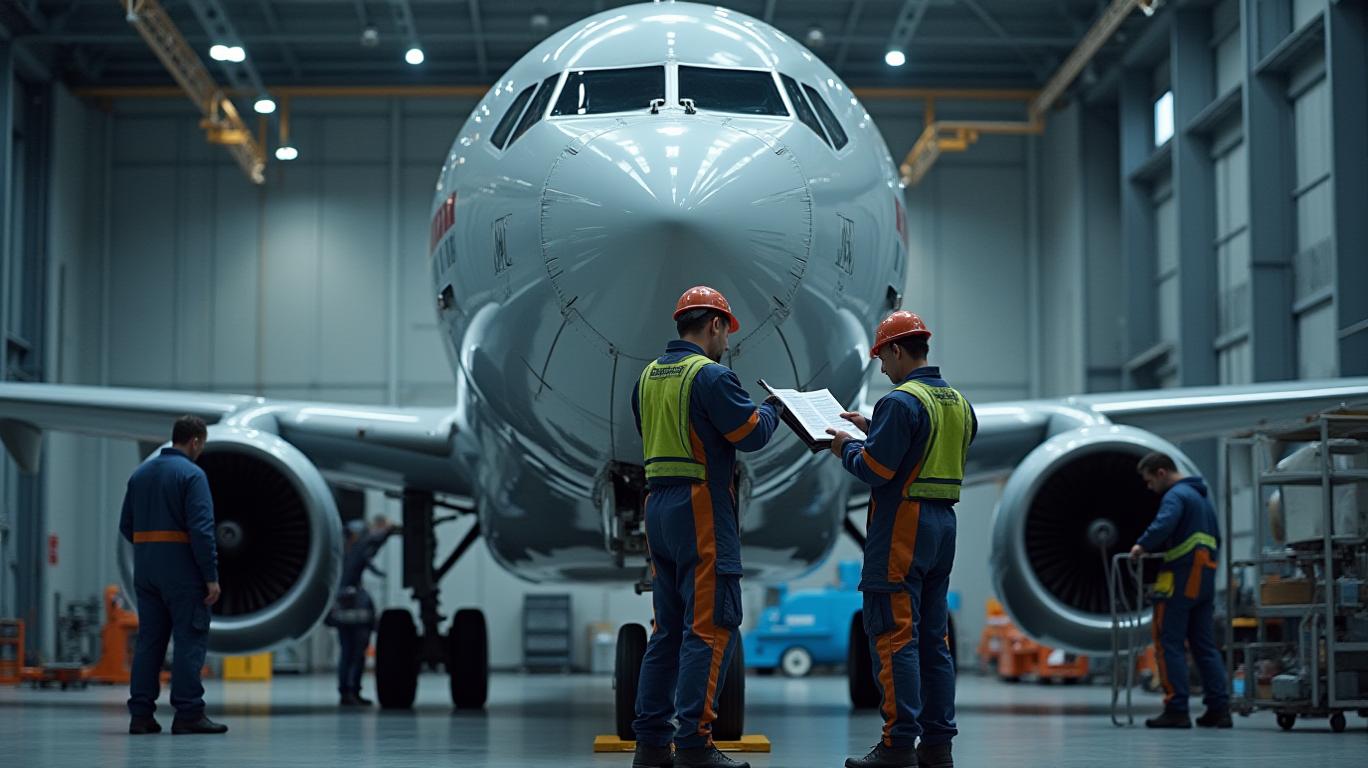Sky-High Returns: Seizing Opportunities in Airline Capacity Constraints for Summer 2025
The airline industry is bracing for a summer 2025 storm. Aircraft delivery delays, aging fleets, and labor shortages are converging to create a perfect storm of capacity constraints, threatening profitability and operational resilience. For astute investors, this crisis is a catalyst for opportunity—not in airlines themselves, but in the aircraft leasing and maintenance sectors positioned to profit from these bottlenecks. Here’s how to capitalize before the summer rush.
The Perfect Storm: Constraints Fueling Short-Term Pain
The airline industry’s challenges are well-documented but underappreciated. Aircraft delivery delays have pushed Airbus’s backlog to 8,658 planes, with narrowbody slots stretching into the 2030s. Boeing’s 737 MAX production struggles, exacerbated by strikes and regulatory hurdles, mean carriers are flying older, less efficient planes. This has driven the global fleet’s average age to a record 14.8 years, straining maintenance capacity.
Maintenance backlogs are now critical. With 14% of aircraft grounded for repairs and parts shortages worsening, maintenance, repair, and overhaul (MRO) providers are the lifeline for airlines desperate to keep planes flying. Meanwhile, labor shortages—particularly among technicians and pilots—are compounding delays. IATA warns of a need for 1.3 million new maintenance staff by 2042, but the crunch is here now.
Why Aircraft Leasing and Maintenance Are the Winners
The constraints favor companies that can bridge gaps in supply and expertise.
1. Aircraft Leasing: The “Flex Capacity” Play
Leasing firms like AerCap (AMH) and Aviation Capital Group (EAV) profit as airlines avoid long-term commitments to delayed deliveries. With new aircraft unavailable, carriers are turning to leased planes to fill gaps. Leasing companies can also acquire older planes from retiring fleets, refurbish them, and rent them at premium rates.
Why now? Leasing firms’ earnings are inversely tied to airline capital expenditures. As airlines cut capacity (e.g., United’s 5.8% reduction in Q1 2025), leasing companies gain flexibility to deploy assets where demand is strongest.
2. Maintenance & Repair: The “Essential Service” Play
MRO providers like AAR Corp (AMTD) and Universal Avionics (UAVS) are indispensable. With fleets aging and parts scarce, airlines will pay premium prices to avoid downtime.

Key metrics to watch:
- AMTD’s backlog of maintenance orders.
- UAVS’s margins, as it shifts toward high-margin retrofitting services.
3. The Labor Shortage Multiplier
Maintenance firms with skilled workforces and training programs (e.g., Carnival Aerospace (CARA)) can command higher prices. Their ability to attract technicians in a tight labor market translates to pricing power.
Execute with Precision: Short-Term Catalysts
The summer 2025 peak is the inflection point. Airlines will face three critical pressures:
1. Demand volatility: Softening demand due to inflation and a strong dollar could force further capacity cuts.
2. Maintenance surges: Airlines will scramble to prep aging fleets for peak travel.
3. Safety scrutiny: Regulators may mandate accelerated inspections for older aircraft, boosting MRO demand.
Investors should prioritize companies with:
- Inventory of leased aircraft (AMH, EAV).
- Vertical integration (e.g., AMTD’s engine MRO division).
- Exposure to narrowbody fleets (737 MAX/A320NEO), which dominate short-haul routes critical for summer demand.
Risk and Reward: Time to Act
The risks are clear: geopolitical tensions (e.g., fuel supply), macroeconomic slowdowns, and overvaluation of some stocks. But the immediate catalyst is summer 2025’s operational crunch. Airlines cannot afford to idle planes, and they’ll pay a premium to MRO/leasing firms to avoid revenue losses.
Entry points:
- Buy AMTD and UAVS on dips below their 200-day moving averages.
- Accumulate AMH if its dividend yield exceeds 3% (current yield: 2.8%).
The airline industry’s pain is your gain. Act now—before the skies clear.
This article is for informational purposes only. Always conduct your own research or consult a financial advisor before making investment decisions.

Comments
No comments yet